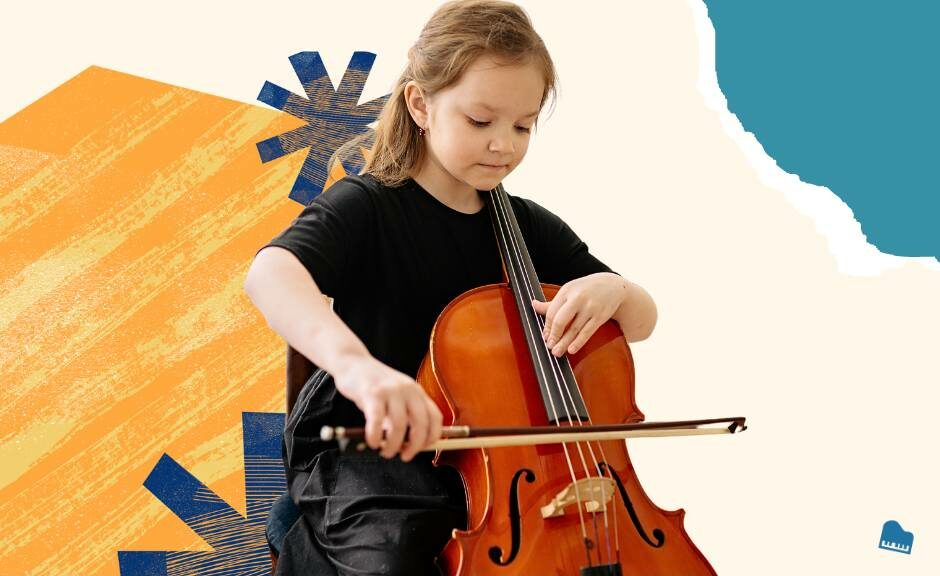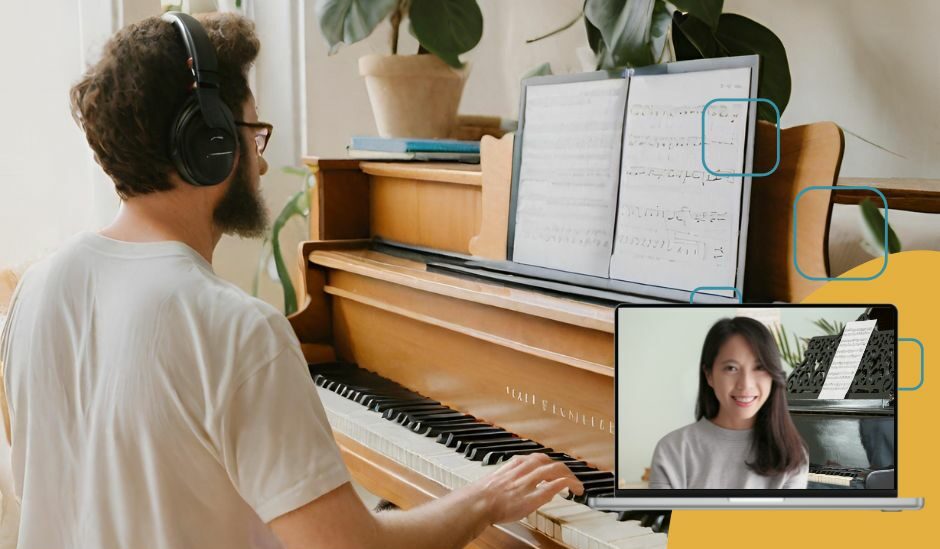Getting Started
How to Choose the Best Cello Size for Children, Teens, and Adults

Rose Park
3/9/25 • 4 min read
When learning the cello, size matters more than you might think. A cello that’s too big can be difficult to handle, while one that’s too small may cause awkward hand positioning.
The right fit makes learning easier and more enjoyable, helping students progress with confidence. Whether you’re choosing a cello for a young beginner or an adult, this guide will help you find the best fit.
60+
Instructors
30,000+
Lessons taught
4.9/5 ⭐⭐⭐⭐⭐
Average lesson rating
Why Size Matters for Learning the Cello
When starting the cello, many beginners don’t realize just how important instrument size is. Unlike a guitar or piano, where hand positioning can be adjusted more easily, the cello requires precise posture and finger placement. A cello that’s too big makes it difficult to reach the strings and shift positions comfortably, while one that’s too small can cause awkward hand technique and affect tone quality.
For young students under age 14, choosing the right cello size is especially important, as it helps prevent strain and frustration. It will also make the instrument easier to play. Some parents think a bigger cello will last longer, but it can actually slow their learning progress. Take the time to find the right size from the start with guidance from a teacher.
Finding the Right Cello for Different Age Groups
Height, arm length, and comfort are key factors in selecting the right cello size for each age group. Here’s a simple guide to help find the best fit at different stages of learning:
Ages 6-7 (under 4 feet tall) – 1/8 size
Ages six is quite young to start cello, and many teachers recommend waiting until ages 7 or 8. But some children can begin at 6 if they have the physical coordination to handle the instrument and ability to focus during the lesson. In general, the 1/8 size allows small hands to reach the fingerboard comfortably and helps prevent strain.
Ages 7-10 (4 to 4.5 feet tall) – 1/4 or 1/2 size
As children grow, they may transition to a 1/4 or 1/2 size. The right choice depends on arm length—some students may need a 1/2 size earlier if they have longer arms. These sizes offer a fuller sound while still being easy to handle.

Explore LWY music lessons
Ages 11-14 (4.5 to 5 feet tall) – 3/4 size
A 3/4 cello is a great bridge between student and full-size instruments. It produces a bigger, more resonant sound while remaining manageable for players who aren’t quite ready for a full-size cello
Ages 15+ and adults (5 feet and taller) – 4/4 (full-size) or 7/8 for slightly smaller players
How to Test if a Cello Fits Well
The player should be able to reach the fingerboard comfortably, without straining or stretching too much. Their fingers should land naturally on the strings, and their arms should feel relaxed. The endpin should also be adjusted so the cello sits at the correct height—when seated, the top of the cello should line up with the middle of the chest.
If you’re still unsure, it’s usually better to go a little smaller than too big. An oversized cello can make it harder to learn proper technique and may cause discomfort. If you need help deciding, ask a cello teacher or an instrument store specialist—they can assess the fit and make sure the student starts with a size that feels just right.
Start Your Free Trial Lesson
Take a 30-minute complimentary lesson with exceptional music teachers. Flexible scheduling, no contracts required.
When Should You Upgrade to a Larger or Better Cello?
Outgrowing a cello is a good sign—it means the student is growing and improving! But playing on an instrument that’s too small can start to feel awkward and uncomfortable. If maintaining good posture is becoming difficult, or fingers feel too cramped on the fingerboard, it might be time to size up.
Many young students upgrade every few years, though some may need to switch sooner due to sudden growth spurts. If you’re unsure, checking with a cello instructor or visiting a music store can help confirm when it’s time for a change.
As an adult player, your cello should keep up with your skills. A better-quality instrument enhances tone, responsiveness, and expressiveness—especially for those wanting to learn more advanced pieces. If your current cello no longer meets your musical goals, upgrading within your budget can bring renewed inspiration and make practice even more rewarding.
Should Beginners Rent or Buy a Cello?
If you’re just starting out, choosing a reliable, well-made beginner cello is essential. Yamaha cellos, for example, are a great choice for beginners, offering solid construction and a warm tone at a reasonable price—typically between $1,000 and $3,000. You’ll find cheaper cellos under $1,000 in online or in-person stores, but they may have poor construction and require frequent repairs.
Renting is also an option if you’re unsure about committing. The best beginner cello should feel comfortable to play and produce a clear, resonant sound. Visiting a trusted music store and getting guidance from a teacher can help you find the right instrument to start your journey.
Start a Free Lesson at Lesson With You!
Starting with the correct cello size makes learning easier and more enjoyable. But just as important as the instrument is having a great instructor to support your progress.
At Lessons With You, you’ll work with a professional cello teacher who can help you master the basics and develop skills to take your playing even further.
Interested in a certain style?
Musical Theatre Singing Lessons | Classical singing Lessons | Rock singing Lessons | Country singing Lessons | Pop Singing Lessons
Classical Guitar Lessons | Acoustic Guitar Lessons | Jazz Guitar Lessons | Rock Guitar Lessons | Electric Guitar Lessons | R&B Guitar Lessons

Rose Park
Rose Park is a graduate of the Jacobs School of Music at Indiana University where she studied Piano Performance and Arts Administration, receiving both Bachelor's and Master's degrees before co-founding Lesson With You. As a pianist, Rose was a prizewinner in many international piano competitions and performed at various summer programs and festivals across the United States, Italy, and Japan.




